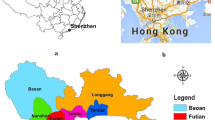Abstract
Our paper addresses the mobility patterns in Lisbon in the vicinity of historical and transportation points of interest, with a case study conducted in the parish of Santa Maria Maior, a vibrant touristic neighborhood. We propose a data science-based approach to analyze such patterns. Our dataset includes five months of georeferenced mobile phone data, collected during late 2021 and early 2022, provided by the municipality of Lisbon. We performed a systematic literature review, using the PRISMA methodology and adopted the CRISP-DM methodology, to perform data curation, statistical and clustering analysis, and visualization, following the recommendations of the literature. For clustering we used the DBSCAN algorithm. We found eight clusters in Santa Maria Maior, with outstanding clusters along 28-E tram and Lisbon Cruise Terminal, where mobility is high, particularly for non-roaming travelers. This paper contributes to the digital transformation of Lisbon into a smart city, by improving improved understanding of urban mobility patterns.
Access this chapter
Tax calculation will be finalised at checkout
Purchases are for personal use only
Similar content being viewed by others
References
Mobilidade na cidade de Lisboa com base em dados de telemóveis – LxDataLab. https://lisboainteligente.cm-lisboa.pt/lxdatalab/desafios/mobilidade-na-cidade-de-lisboa-com-base-em-dados-de-telemoveis/. Accessed 30 Aug 2022
LxDataLab - Lisboa Inteligente. https://lisboainteligente.cm-lisboa.pt/lxi-iniciativas/lxdatalab/. Accessed 03 Sep 2022
CRISP-DM - a framework for data mining & analysis. https://thinkinsights.net/data-literacy/crisp-dm/. Accessed 21 Oct 2022
Schröer, C., Kruse, F., Gómez, J.M.: A systematic literature review on applying CRISP-DM process model. Procedia Comput. Sci. 181, 526–534 (2021). https://doi.org/10.1016/J.PROCS.2021.01.199
Page, M.J., et al.: The PRISMA 2020 statement: an updated guideline for reporting systematic reviews. BMJ, 372 (2021). https://doi.org/10.1136/BMJ.N71
Saliba, M., Abela, C., Layfield, C.: Vehicular traffic flow intensity detection and prediction through mobile data usage. In: CEUR Workshop Proceedings, vol. 2259, pp. 66–77 (2018)
Irrevaldy, Saptawati, G.A.P.: Spatio-temporal mining to identify potential traff congestion based on transportation mode. In: Proceedings of 2017 International Conference on Data and Software Engineering, ICoDSE, pp. 1–6 (2017). https://doi.org/10.1109/ICODSE.2017.8285857
Li, C., Hu, J., Dai, Z., Fan, Z., Wu, Z.: Understanding individual mobility pattern and portrait depiction based on mobile phone data. ISPRS Int. J. Geoinf. 9(11), 666 (2020). https://doi.org/10.3390/ijgi9110666
Li, M., Jin, B., Tang, H., Zhang, F.: Clustering large-scale origin-destination pairs: a case study for public transit in Beijing. In: Proceedings - 2018 IEEE SmartWorld, Ubiquitous Intelligence and Computing, Advanced and Trusted Computing, Scalable Computing and Communications, Cloud and Big Data Computing, Internet of People and Smart City Innovations, SmartWorld/UIC/ATC/ScalCom/CBDCo, pp. 705–712, (2018). https://doi.org/10.1109/SmartWorld.2018.00137
Qin, S., Man, J., Wang, X., Li, C., Dong, H., Ge, X.: Applying big data analytics to monitor tourist flow for the scenic area operation management. Discrete Dyn. Nat. Soc. 2019, 1–11 (2019). https://doi.org/10.1155/2019/8239047
Balzotti, C., Bragagnini, A., Briani, M., Cristiani, E.: Understanding human mobility flows from aggregated mobile phone data. IFAC-PapersOnLine 51(9), 25–30 (2018). https://doi.org/10.1016/j.ifacol.2018.07.005
Yuan, Y., Raubal, M.: Extracting dynamic urban mobility patterns from mobile phone data. In: Xiao, N., Kwan, M.-P., Goodchild, M.F., Shekhar, S. (eds.) GIScience 2012. LNCS, vol. 7478, pp. 354–367. Springer, Heidelberg (2012). https://doi.org/10.1007/978-3-642-33024-7_26
Wang, P., Zhang, J., Liu, G., Fuu, Y., Aggarwal, C.: Ensemble-spotting: ranking urban vibrancy via POI embedding with multi-view spatial graphs. In: SIAM International Conference on Data Mining, SDM 2018, pp. 351–359 (2018). https://doi.org/10.1137/1.9781611975321.40
Martins, T.G., Lago, N., Santana, E.F.Z., Telea, A., Kon, F., de Souza, H.A.: Using bundling to visualize multivariate urban mobility structure patterns in the São Paulo metropolitan area. J. Internet Serv. Appl. 12(1), 1–32 (2021). https://doi.org/10.1186/s13174-021-00136-9
Senaratne, H., et al.: Urban mobility analysis with mobile network data: a visual analytics approach. IEEE Trans. Intell. Transp. Syst. 19(5), 1537–1546 (2018). https://doi.org/10.1109/TITS.2017.2727281
Fontes, T., Arantes, M., Figueiredo, P.V., Novais, P.: A cluster-based approach using smartphone data for bike-sharing docking stations identification: lisbon case study. Smart Cities 5(1), 251–275 (2022). https://doi.org/10.3390/smartcities5010016
Haidery, S.A., Ullah, H., Khan, N.U., Fatima, K., Rizvi, S.S., Kwon, S.J.: Role of big data in the development of smart city by analyzing the density of residents in shanghai. Electronics 9(5), 837 (2020). https://doi.org/10.3390/electronics9050837
Diário da República, 1.a série — N.o 216 — 8 de novembro de 2012 (2012). https://files.dre.pt/1s/2012/11/21600/0645406460.pdf. Accessed 09 Sep 2022
OSMnx 1.2.2 — OSMnx 1.2.2 documentation. https://osmnx.readthedocs.io/en/stable/. Accessed 09 Sep 2022
Acknowledgements
This work is partially funded by national funds through FCT - Fundação para a Ciência e Tecnologia, I.P., under the project FCT UIDB/04466/2020.
Author information
Authors and Affiliations
Corresponding author
Editor information
Editors and Affiliations
Rights and permissions
Copyright information
© 2023 ICST Institute for Computer Sciences, Social Informatics and Telecommunications Engineering
About this paper
Cite this paper
Leal, D., Albuquerque, V., Dias, M.S., Ferreira, J.C. (2023). Analyzing Urban Mobility Based on Smartphone Data: The Lisbon Case Study. In: Martins, A.L., Ferreira, J.C., Kocian, A., Tokkozhina, U. (eds) Intelligent Transport Systems. INTSYS 2022. Lecture Notes of the Institute for Computer Sciences, Social Informatics and Telecommunications Engineering, vol 486. Springer, Cham. https://doi.org/10.1007/978-3-031-30855-0_3
Download citation
DOI: https://doi.org/10.1007/978-3-031-30855-0_3
Published:
Publisher Name: Springer, Cham
Print ISBN: 978-3-031-30854-3
Online ISBN: 978-3-031-30855-0
eBook Packages: Computer ScienceComputer Science (R0)




